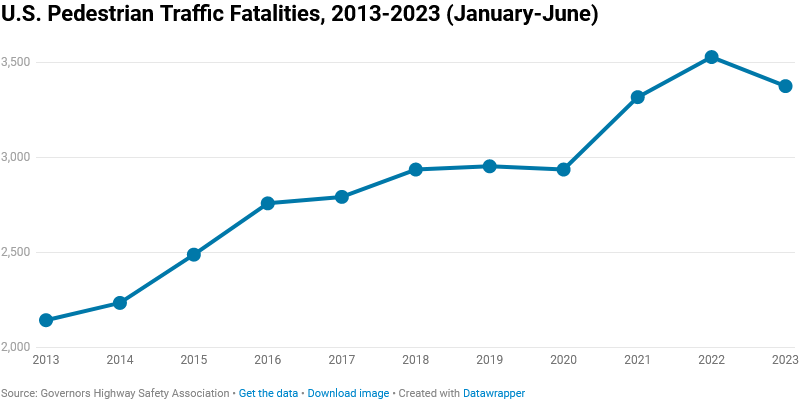US Road Fatalities Outnumber Homicides by More Than Double, Highlighting Overlooked Urban Danger

Recent social media commentary has drawn stark comparisons between urban crime rates and the pervasive, yet often less sensationalized, issue of traffic fatalities in U.S. cities. A tweet by (((Matthew Lewis))) cults & consequences, posted on August 22, 2025, provocatively stated, > "There’s this enduring myth about US cities that they’re crime-infested hellholes where murderers lurk around every dark corner, and what’s fucked up is … It’s true. But the criminals are all drivers slaughtering people in the streets with their cars." This assertion, while hyperbolic, underscores a significant public safety concern supported by recent data.
In 2023, the National Highway Traffic Safety Administration (NHTSA) and the Insurance Institute for Highway Safety (IIHS) reported approximately 40,901 motor vehicle crash deaths across the United States. This figure includes 7,314 pedestrian fatalities and 1,155 bicyclist fatalities, highlighting the particular vulnerability of non-occupant road users. These numbers represent a substantial cause of death that often receives less public attention than other forms of violence.
For comparison, data compiled by the Pew Research Center from the Centers for Disease Control and Prevention (CDC) indicates that there were 17,927 gun murders in the U.S. in 2023. This means that total traffic fatalities were more than double the number of gun murders in the same year. The tweet's framing, while designed to provoke, statistically reflects a reality where vehicular incidents account for a significantly higher death toll than homicides.
Contributing factors to these traffic deaths include speeding, distracted driving, and inadequate infrastructure for pedestrians and cyclists. While efforts are continuously made to improve road safety through vehicle technology, law enforcement, and urban planning, the sheer volume of traffic and the complex interplay of human behavior and urban design continue to pose significant challenges. The disproportionate impact on pedestrians and cyclists in urban environments further emphasizes the need for comprehensive safety strategies.
The disparity between public perception of danger and the statistical reality of traffic-related deaths suggests a need for increased awareness and policy focus on road safety. As cities strive to become safer, addressing the pervasive threat of vehicular violence remains a critical, albeit often understated, component of public health and safety initiatives.